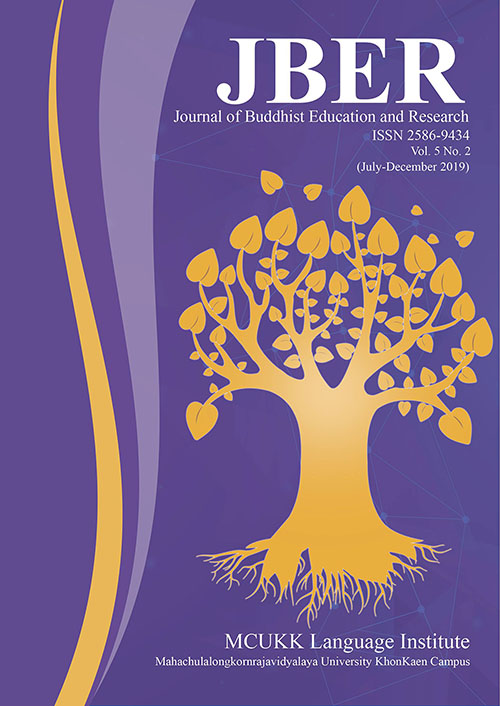BUDDHADASA BHIKKHU'S HERMENEUTICS OF PASAKON-PASADHAMMA THROUGH THE CONCEPT OF HANS-GORGE KADAMER'S HERMENEITICS
Keywords:
Interpretation, Pasakhon-PasadhamAbstract
This article tries to point out the interpretation of both of them namely, Buddhadasa Bhikkhu and Hans-George Kadamar about their interpretation of religious words or scripture which will allow the later students to see various aspects and ways to understand the meaning of the terminology and doctrine in their religion more clearly. The important thing is that the author of the article wants the students to later see the views of the religious interpretation of both the East and the West. It has become a more visible image which will be a benefit for those who will study the doctrine in Buddhism after. These issues that made the author especially interested in trying to study the methods that both of them have mentioned can be used to maintain one's religion, especially about studing of the doctrine in Buddhism is more than just education to understand the meaning of the alphabet or structure only. Because the interpretation or exchange of religious science is very important. The students should pay attention not only to study only doctrine, but must be studied in order to understand what is contained in that doctrine, along with the implementation to achieve real resultsand it is in accordance with the educational goals of each religion.
References
พระธรรมปิฎก. (2538). พุทธธรรม. กรุงเทพฯ : มหาจุฬาลงกรณราชวิทยาลัย.
พุทธทาสภิกขุ. (2509). ภาษาคน-ภาษาธรรม. กรุงเทพฯ : เอส. อาร์. ปรินติ้ง จำกัด.
_______. (2562). สืบค้นเมื่อ 15 มิถุนายน 2562 จาก https://th.wikibooks.org/wiki/พุทธทาสภิกขุ
วีรชาติ นิ่มอนงค์. (2552). การศึกษาวิเคราะห์ทฤษฎีอรรถปริวรรตศาสตร์ในคัมภีร์พระพุทธศาสนาเถรวาท. รายงานการวิจัย. สถาบันวิจัยพุทธศาสตร์ มหาวิทยาลัยมหาจุฬาลงกรณราชวิทยาลัย.
Brede Kristensen. (1969). “The Meaning of Religion”. J.D. Bettis, ed. Phenomenology of Religion. London : Cambridge.
Hans-Georg, Gadamer. (1980). Dialogue and Dialecticb : Eight Hermeneutical Studies on Plato. Trans. P. Christopher Smith. New Haven, London: Yale University Press.
Hans-Georg, Gadamer. (1976). Hegel’s Dialectic: Five hermeneutical Studies. New Haven, London: Yale University Press.
Gethin, Rupert. (1998). The Foundations of Buddhism. Oxford, NY: Oxford University Press.
Immanuel Kant. (1920). Critique of Pure Reason. trans. by Norman Kemp Smith, NY: St. Martin’s Press.
Klemm, David E. (1986). Hermeneutical Inquiry. 2 Vols, Atlanta, GA: Scholars Press.
Paul Ricoeur. (1995). The Philosophy of Paul Ricoeur. ed., by Lewis Edwin Hahn, IL: Opencourt.
Paul Ricoeur. (1976). Interpretation Theory: Discourse and the Surplus Meaning. Fort Worth : Texas Christian University Press.
Paul Ricoeur. (1977). The Rule of Metaphor. trans. by Robert Czerny. Toronto: University of Toronto Press.
Paul Ricoeur. (1966). Freedom and Nature : The Voluntary and the Involuntary. Evanston : Northwestern University Press.
Rupert Gethin. (1978). The Foundations of Buddhism. Oxford. NY: Oxford University Press.
Seri Phongphit, Michael. (1978). The Problem of Religious Language: A Study of Buddhadasa Bhikkhu and Ian Ramsey as Models for a Mutual Understanding of Buddhism and Christianity. Doctoral Dissertation. Graduate School of Philosophy. Munichen University.





